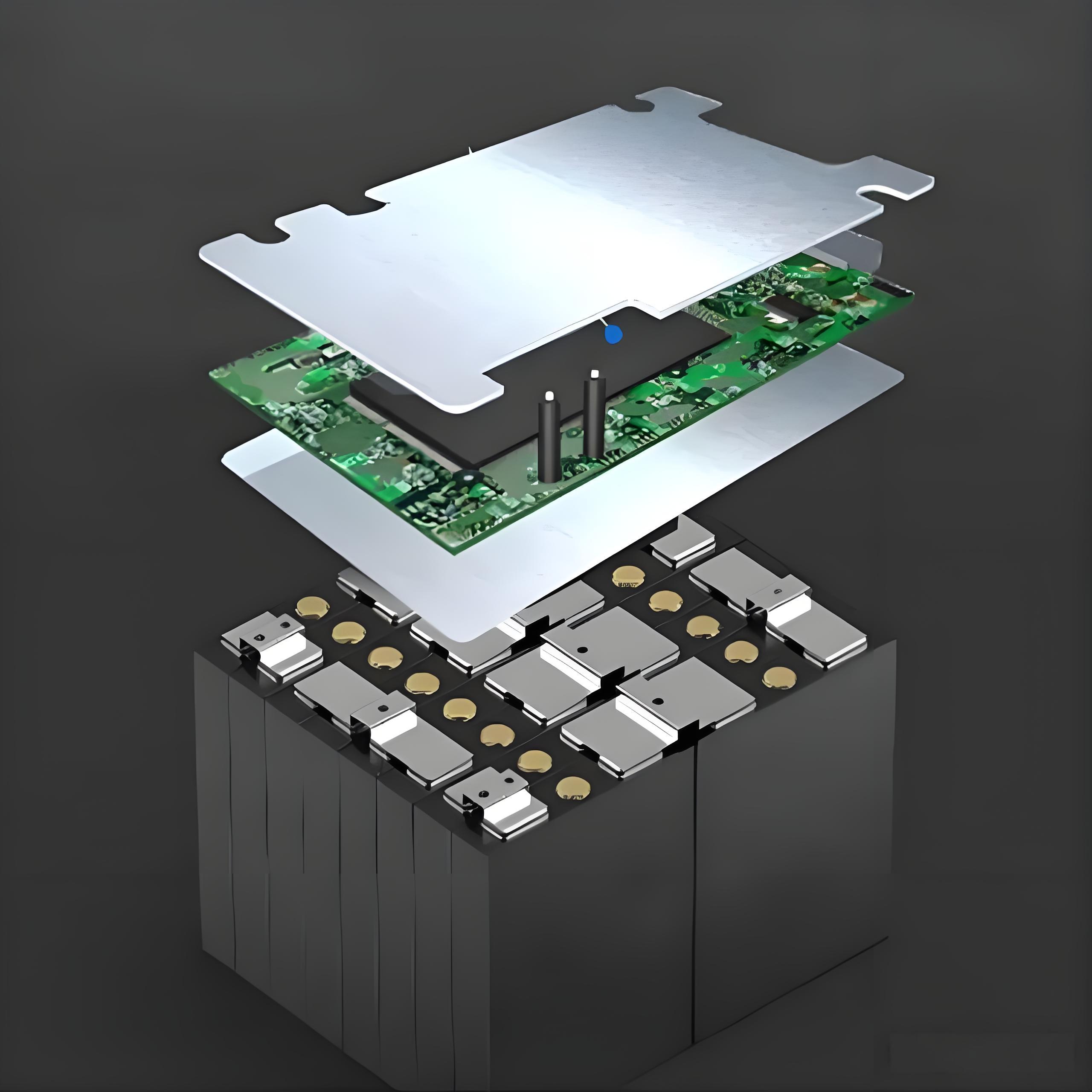
The Battery Management System (BMS) is the core control system of the battery pack, responsible for monitoring, protecting and optimizing battery performance to ensure its safe, reliable and efficient operation.
Core functions of BMS
The main functions of BMS can be divided into the following categories:
1. Battery status monitoring
Voltage monitoring: Real-time monitoring of the voltage of each battery cell and the entire battery pack, accurately obtaining voltage data, so as to promptly detect voltage abnormalities, such as overvoltage, undervoltage, etc., and provide basic information for the safe use and performance evaluation of the battery.
Current monitoring: Accurately measure the current size and direction during the battery charging and discharging process, understand the battery charging and discharging status and energy flow, and then calculate the battery charging and discharging capacity, providing an important basis for estimating the remaining battery capacity.
Temperature monitoring: Real-time monitoring of the temperature at different locations of the battery pack. Since the battery will generate heat during the charging and discharging process, too high or too low temperature will affect the performance and life of the battery, and even cause safety problems, so accurate temperature monitoring is the key to ensuring battery safety and performance.
2. Battery status evaluation
SOC estimation: Based on the battery's voltage, current, temperature and other parameters, multiple algorithms such as ampere-hour integration method, open circuit voltage method, neural network method, etc. are used to estimate the remaining battery capacity in real time, so that users can clearly understand the available battery capacity, so as to reasonably arrange the use of equipment.
State of Health (SOH) Assessment: By analyzing the battery's charge and discharge history data, internal resistance changes, capacity attenuation, etc., the battery's health status is assessed, the remaining service life of the battery is predicted, and a reference is provided for battery replacement and maintenance, which helps to improve the reliability and stability of the equipment.
3. Charge and discharge management
Charging control: During the charging process, the charging current and voltage are accurately controlled according to the battery status and charging requirements to ensure that the battery can be charged in a safe and efficient manner, prevent overcharging, undercharging, and overheating, and extend the battery life. For example, the constant current-constant voltage charging mode is adopted. At the beginning of charging, the battery is charged with a constant current. When the battery voltage reaches a certain value, it is switched to constant voltage charging until the charging is completed.
Discharge control: Monitor the battery's discharge process to prevent the battery from over-discharging. When the battery voltage or power reaches the set lower limit, the discharge circuit is cut off in time to protect the battery from irreversible damage. At the same time, according to the load requirements, the battery's output power is reasonably allocated to ensure that the battery can provide stable power under different working conditions.
4. Battery safety protection
Overvoltage protection: When the voltage of a battery pack or a single cell exceeds the safety threshold, the BMS will quickly take measures, such as cutting off the charging circuit or limiting the charging voltage, to prevent the battery from bulging, burning or even exploding due to overvoltage.
Overcurrent protection: Once it is detected that the battery charge and discharge current exceeds the maximum allowed value, the BMS will immediately cut off the circuit to prevent the battery and other equipment from being damaged by overcurrent, and also prevent overheating and fire risks caused by excessive current.
Overheat protection: When the battery temperature is too high, the BMS will start the heat dissipation mechanism, such as turning on the fan or stopping the charge and discharge operation, to reduce the battery temperature and prevent the battery from accelerating aging or safety hazards due to high temperature. In addition, the battery can be heated in a low temperature environment to ensure that the battery works within a suitable temperature range.
Short circuit protection: When a short circuit occurs inside or outside the battery pack, the BMS can quickly detect and cut off the circuit to prevent the short circuit current from causing serious damage to the battery and equipment, and ensure personal and equipment safety.
5.Balance management:
Due to the differences in manufacturing process, initial capacity, self-discharge rate, etc. among the cells in the battery pack, inconsistencies are prone to occur during the charging and discharging process, resulting in a decrease in the overall performance of the battery pack. BMS uses active or passive balancing technology to balance the cells in the battery pack, so that each cell can be charged and discharged in a nearly identical state, thereby improving the overall capacity and service life of the battery pack.
6.Communication function:
BMS communicates with external devices through specific communication protocols (such as CAN, RS485, etc.), transmits battery status information (such as voltage, current, temperature, SOC, SOH, etc.) to the control system or user interface of the device, and receives control commands from the outside to achieve remote monitoring and management of the battery, so that users can understand the battery's operating status in a timely manner and perform corresponding operations and adjustments.
Bosa Energy
Bosa Energy with 150GWH capacity and over 400,000 electric bus/utility vehicle application experience we are listing first 5 in China power battery industry. We cooperate with Yutong/Geely/Damiler etc.
We are also offering Container ESS systems and delivered 6GWh in 2024(=75,000 Model3 with 80kWh battery). In local market, we are offering OEM service for Changan, CALB, National grid, Ping Gao Electric , Xuji electronics, Ruineng electronics, they are our main Container ESS suppliers in China Market.
We are the most professional supplier of marine lithium batteries in China, and our export volume of marine batteries consistently ranks among the top three in China; We are also the top 1 exporter of lithium battery modules in China, specializing in providing various lithium battery module solutions.
For excellent quality and performance our products are popular in more than 30 countries in the world. We also have established warehouse in Germany and Netherlands to provide safety stock timely delivery for our customers.
l Customized and Flexible
l High Delivery capacity
l Wide Applications
l Rich experience on Lithium battery pack






